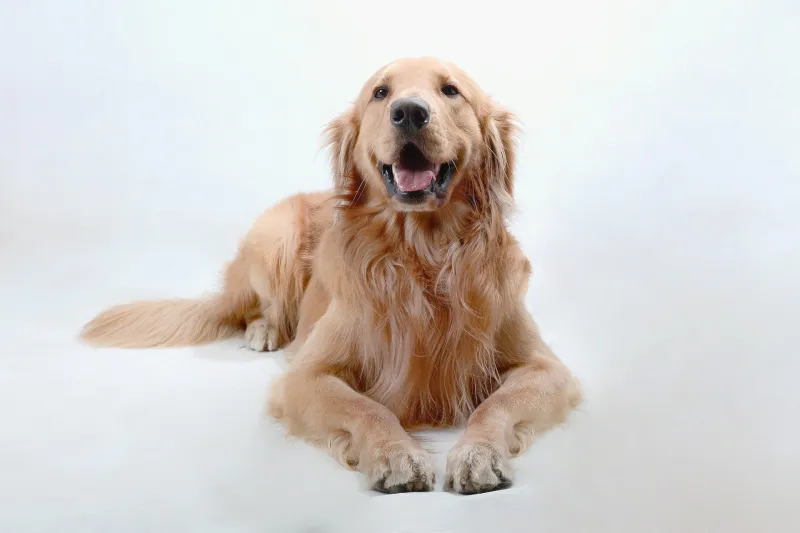Do Dogs Smile? Understanding Your Dog’s Expressions
If you’ve ever seen your dog’s face brighten up with what seems like a grin, you may have wondered: Do dogs actually smile? While dogs don’t smile in the same way humans do, they do have expressions and behaviours that communicate happiness, relaxation, and affection. Here’s how to understand your dog’s “smile” and what it might mean.
What Does a Dog’s “Smile” Mean?
A dog’s smile typically involves an open, relaxed mouth, soft eyes, and a calm expression. When a dog is truly happy and comfortable, this expression often accompanies other relaxed body language cues, like a wagging tail and a loose posture. It’s a look many pet owners interpret as a “smile,” and it usually is a sign of happiness or contentment.
Why Do Dogs Show This Expression?
Dogs may display this relaxed look for a few reasons:
- Comfort and Contentment: When your dog is at ease during play, a belly rub, or after a walk, you may notice this open-mouthed, soft expression. It’s a natural response to feeling happy and secure.
- Social Mimicking: Dogs are excellent at reading human cues and often mirror human emotions and expressions. If a smile from you is followed by positive attention, petting, or treats, your dog may repeat this “smile” as a form of social bonding.
- Encouraging Interaction: Dogs may learn over time that “smiling” or appearing happy encourages social interaction. This behaviour often results from positive reinforcement, where smiling leads to affection or play, making dogs more likely to repeat it.
Signs of True Happiness in Dogs
It’s helpful to watch for these additional body language signals that often accompany a dog’s “smile” and indicate genuine happiness:
- Relaxed Tail and Body: A softly wagging tail and loose body posture are clear signs your dog feels calm and happy.
- Bright, Soft Eyes: Dogs communicate a lot through eye contact. Soft, calm eyes that look at you gently (often followed by a relaxed blink) show a dog that is comfortable and happy.
- Inviting Play: Playful behaviour, like a “play bow” (where a dog stretches its front legs forward with its rear end up) often indicates a happy dog looking to interact.
When a Dog’s “Smile” Might Mean Something Else
While an open mouth and relaxed appearance typically signal happiness, it’s important to be aware of other factors that could mean your dog is feeling something different:
- Panting or Stress Signals: Dogs often pant to cool down, especially in hot weather or after exercise. However, panting can also be a sign of anxiety, especially if it’s paired with other stress signals like pacing, lip licking, or drooping ears.
- Aggression or Fear: Sometimes dogs will pull back their lips or open their mouths in a way that mimics a “smile” but actually signals discomfort. If their body is tense or if they’re showing teeth with a rigid expression, this could indicate fear or even aggression.
Unique Ways Dogs Show Affection
Dogs have a variety of ways to show affection beyond their “smile.” These include:
- Leaning on You: When a dog leans into you, they’re showing trust and comfort. It’s their way of saying they want to be close to you.
- Slow Blinks and Eye Contact: Soft eye contact and slow blinks are subtle ways that dogs express affection, similar to how cats may use “slow blinks” to communicate trust.
- Licking Your Face or Hands: Licking is often a sign of affection, as dogs naturally use this behaviour with pack members to bond and show submission.
How to Encourage a Happy, Smiling Dog
If you want to see more of your dog’s happy expressions, here are some tips to keep them content and “smiling”:
- Provide Regular Exercise and Play: Keeping your dog physically active helps reduce stress and keep them in a happy, relaxed state.
- Positive Reinforcement: Reward your dog with treats, affection, or playtime when they show calm and happy behaviours, which reinforces their comfort and positive expression.
- Create a Safe Environment: Dogs are naturally social animals, so providing consistent affection, security, and routine helps them feel more at ease.
Final Thoughts
While dogs don’t smile exactly like humans, their version of a smile – an open mouth, relaxed body, and soft eyes, often signals happiness. By observing your dog’s body language and paying attention to the context, you can better understand their moods and ensure they feel loved and comfortable. So, the next time you catch your dog’s version of a smile, you can be confident it’s likely a reflection of their contentment and bond with you.
For more tips on dog ownership and care, explore the Dog Blog at Dog Deals for valuable resources.

